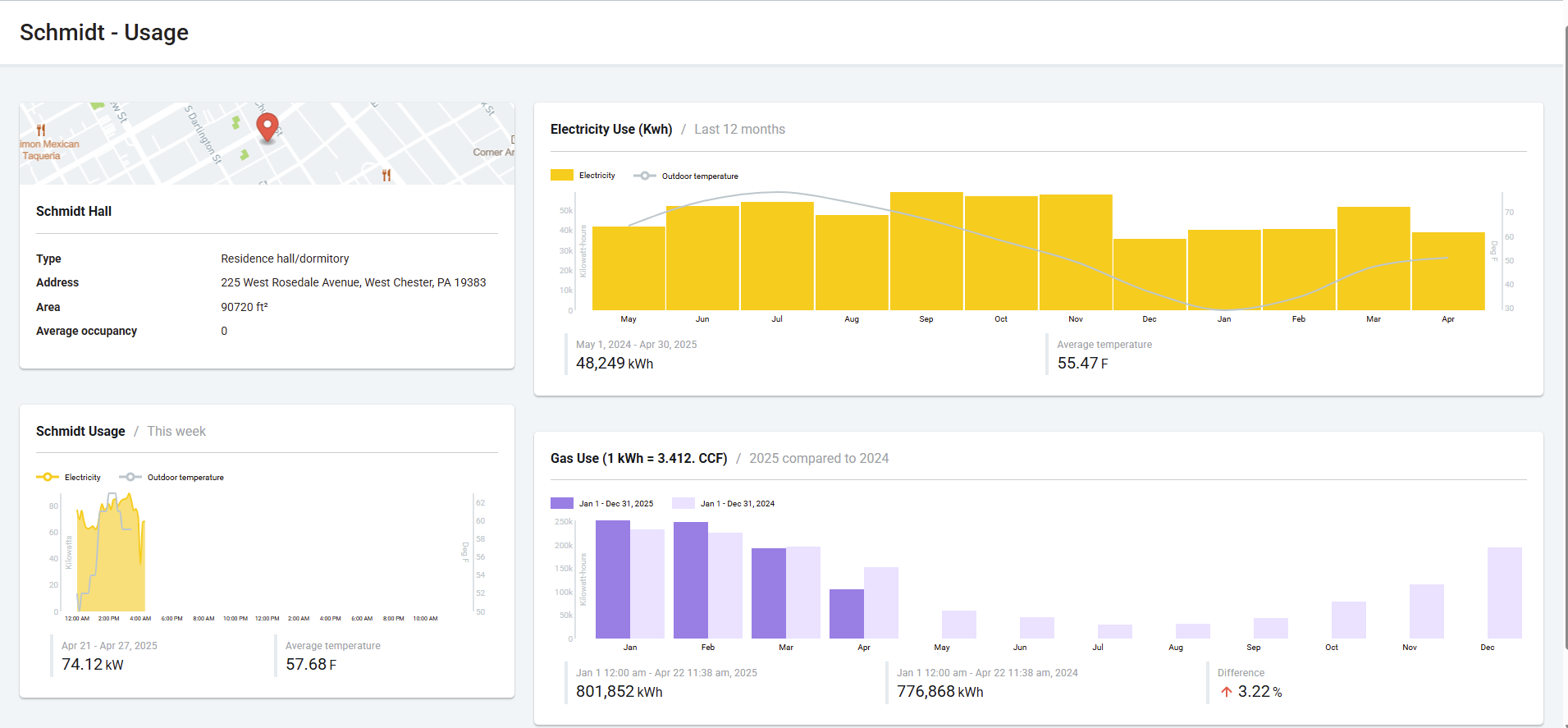
When properly designed and implemented, Building Automation Systems (BAS) are the single-most impactful element of an operationally efficient energy strategy for a facility. BAS provides facility managers with direct insights into building comfort and energy usage, and optimizes building performance through well-conceived sequences of operations translated into highly effective programming by your systems integrator.
Enterprise-level communication between all building systems further enhances energy efficiency by “multitasking” data from disparate systems, and improves operational efficiency by providing building operators with single-seat access to all facility systems data. Implementing a robust and correctly designed, programmed, and commissioned BAS is the vital step in reducing energy costs, improving comfort, and maximizing operational efficiency.
Key elements of an effective and comprehensive BAS plan to optimize energy can include:
- Taking advantage of tested and proven sequences of operations from ASHRAE Guideline 36 control recommendations
- Working with utility providers to minimize rates
- Proactive and predictive maintenance planning
- Evaluating the right partner with extensive knowledge, experience, and results
ASHRAE Guideline 36:
High-Performance Sequences of Operation for HVAC Systems
ASHRAE Guideline 36 provides best-in-class standardized sequences of operations for HVAC control to ensure consistent performance, making it an effective component of a high-performing building. Automated Logic has a history of innovation with energy efficiency through its sequences of operations, which served as a foundational reference in the development of ASHRAE Guideline 36. The guideline imrproves energy efficiency, thermal comfort, and indoor air quality by doing the following:
- Provide control stability and allow for real-time fault detection and diagnostics
- Develop standardized functional testing processes for BAS
- Create a common set of terms to facilitate communication between specifiers, contractors, and operators
Automated Demand Response
Automated Demand Response (ADR) is another powerful BAS tool to reduce energy demand during peak periods. Facilities that implement ADR can achieve significant cost savings through demand reduction incentives and rebates from their utility provider. ADR listens for demand curtailment signals from the utility company and passes these signals to the WebCTRL system, where demand-reduction strategies are applied to the connected HVAC equipment. Evaluating system capabilities for automated or manual demand response can uncover new opportunities to maximize energy efficiency and generate cost savings.
Predictive Maintenance
Fault detection and diagnostics enable facility managers to detect and address potential failures before they become major issues and provide recommended corrective actions. By creating an effective early warning system, facilities prevent unplanned downtime, improve energy efficiency, and reduce operational costs. Implementation of fault detection and diagnostics in a building automation system:
- Increases reliability and improves performance of BAS and HVAC assets by understanding normal use and detecting anomalies
- Reduces wasted energy by detecting when systems are not operating as designed
- Reduces operations and maintenance expenditures through proactive strategies to extend assets useful life
Maintenance Strategies
Routine maintenance and targeted upgrades further enhance system efficiency. Simple actions, including cleaning strainers and coils, servicing steam traps, and upgrading pneumatic systems, can have a substantial impact on equipment performance. Well-maintained, clean equipment consumes less energy because components operate without the added strain of buildup like oil, debris, or leaves. Strategic upgrades can also reduce the load on other systems, preventing unnecessary wear and extending overall equipment life. Addressing common inefficiencies in these areas ensures that HVAC systems operate at peak performance, maximizing both energy savings and occupant comfort.
Choosing the Right Partner
The energy service company selected is critical to the success of the project. It is important to select a vendor that can serve as a partner and trusted advisor, both for this project and long-term organization goals. Exceptional technical expertise and a deep understanding of complex systems turn insight into measurable results.
When evaluating potential partners, look for those who bring:
- Understanding of client goals for the project and a clear definition of metrics that will be measured for success
- Proven practical experience developing and implementing energy efficiency measures
- Understanding and experience in analyzing energy usage in buildings
- Extensive knowledge of building control, HVAC, and electrical systems
- Creativity to develop new, innovative solutions for energy savings, including creative BAS programming
- Measurement and verification experience to ensure long-term success
- In-house personnel with 3rd-party certifications and knowledge of the latest standards, guidelines, and energy mandates
The right partner does more than analyze data and suggest improvements. They understand your building and your organizational goals and have the expertise and insight to implement and service key, high-ROI energy efficiency measures.
Schedule an Energy Audit Today
Unlock significant savings by selecting the right partner to leverage existing knowledge with new technology.




